WHERE DOES JOHN FIT IN?
THE STORY SO FAR
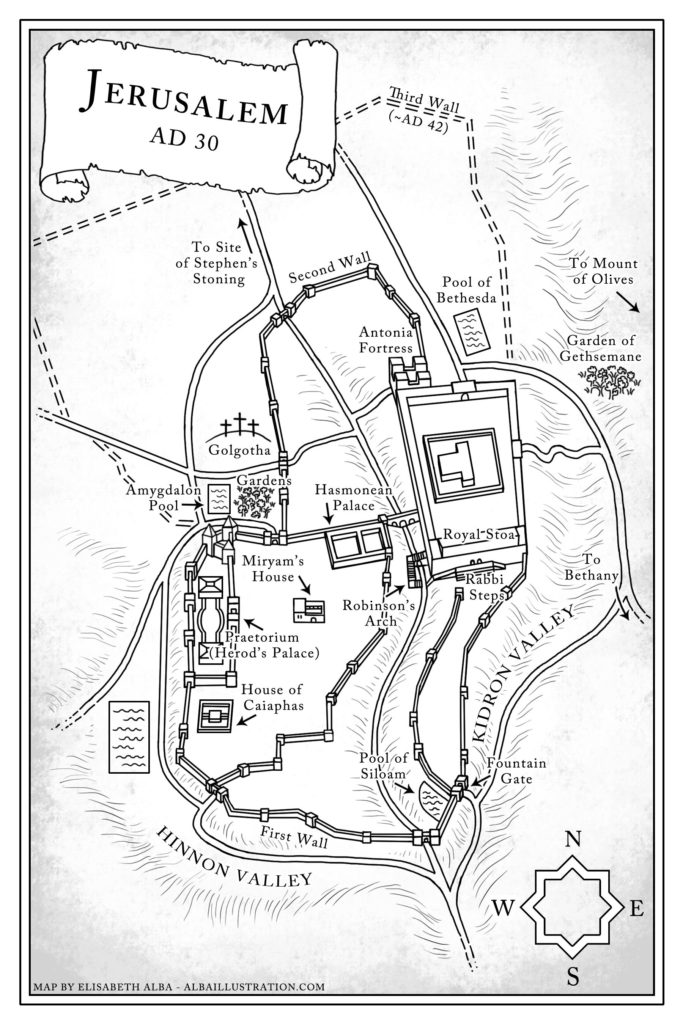
Two months ago I wrote ‘What did he actually do?’ There I traced the events of Jesus’ last week on earth, using principally the Gospel of Mark. See ‘Jesus the Troublemaker’ on revandybooks.org and bibleinbrief.org. The stages of his journey were:
- Walking 18 miles up from Jericho
- His very public entry into the Temple riding a young horse
- Looking round the Temple
- The feast at Bethany
- Driving out the traders and moneychangers
- Making the Outer Court a traffic-free zone
- Debates with the temple authorities
- The Last Supper
- Arrest and trials
- Crucifixion
- Risen!
But John’s gospel tells it rather differently. So how does John’s account fit in?
WHO WAS JOHN?
For 1800 years the Church has assumed that the John who wrote the Gospel of John was John son of Zebedee, or more properly Yohanan bar Zabdai. But is this likely? Apart from chapters 6 and 21, only 22 verses are set in Galilee. The rest is set in Jerusalem.
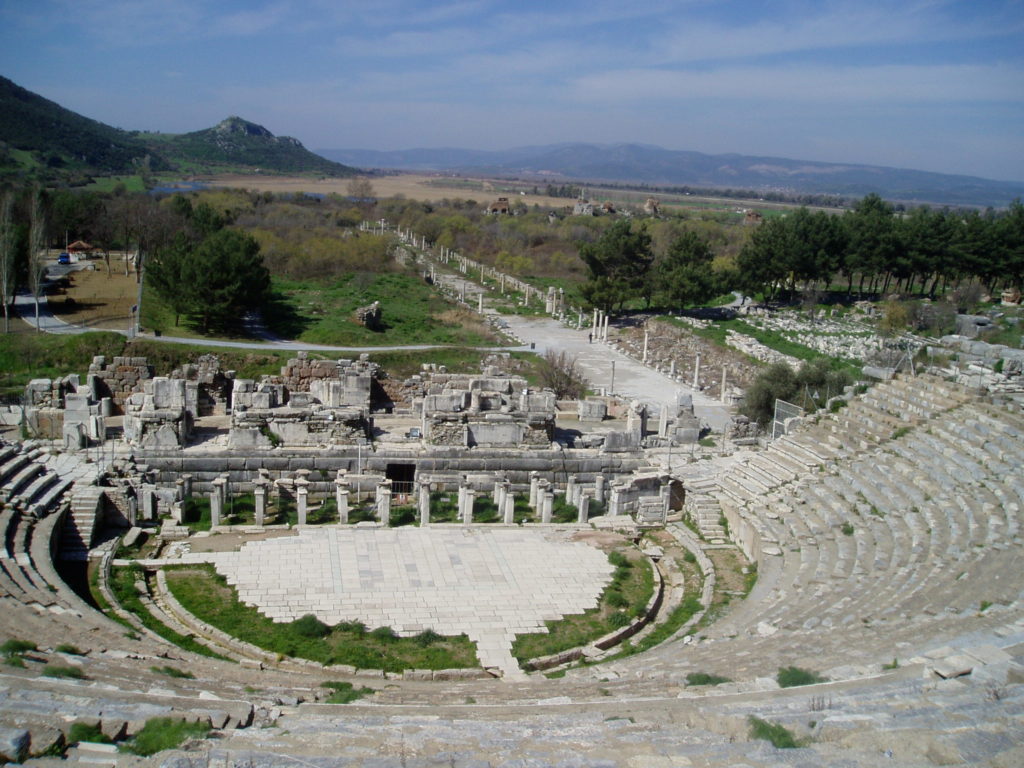
Martin Hengel the great New Testament scholar, was one of the first to suggest that the writer of the gospel was another John, a Jerusalem disciple. (The Johannine Question, 1989). Two second century pieces of evidence imply that the gospel was written by ‘John the Elder’ and that he died in Ephesus at a very great age. Papias (80-130AD) writes of John the Elder, a disciple of the Lord, clearly different from John the Apostle. Polycratets, bishop of Ephesus, writing around 190 AD, spoke of ‘great luminaries in Asia’ among whom was ‘John, he who leant back on the Lord’s breast, who was a priest, wearing the priestly plate (on the turban), both martyr/witness and teacher’.
What is certain is that the gospel was written in the first century, because a fragment of the gospel was found dated around 125 AD, now in the Rylands library in Manchester.
To me the gospel makes most sense if it was written by a Jerusalem disciple, who had the very common name of John, and that later in life, (perhaps following the destruction of Jerusalem), moved to Ephesus.
AGREEMENTS & DISAGREEMENTS
John’s gospel agrees with most of the story outlined in the first section. But there are differences.
1 The Cleansing of the Temple
John places Jesus’ attack on the traders and moneychanger in the temple at the very start of Jesus’ ministry, just after the wedding in Cana of Galilee. I think this is in the wrong place for three reasons:
a) Mark places Jesus’ takeover of the Outer Court of the temple very precisely, the day after the triumphal entry when Jesus simply ‘looked mourned at everything.’ (Mark 11.11). This serves no didactic purpose, it is just want happened.
b) It is unlikely that Jesus performed the same action twice. It was not just a quick one-off event. Mark’s tells that he would not allow anyone to carry trade goods though the Temple, i.e. it was takeover, an occupation which lasted at least till the following day (Mark 11.16, 28)
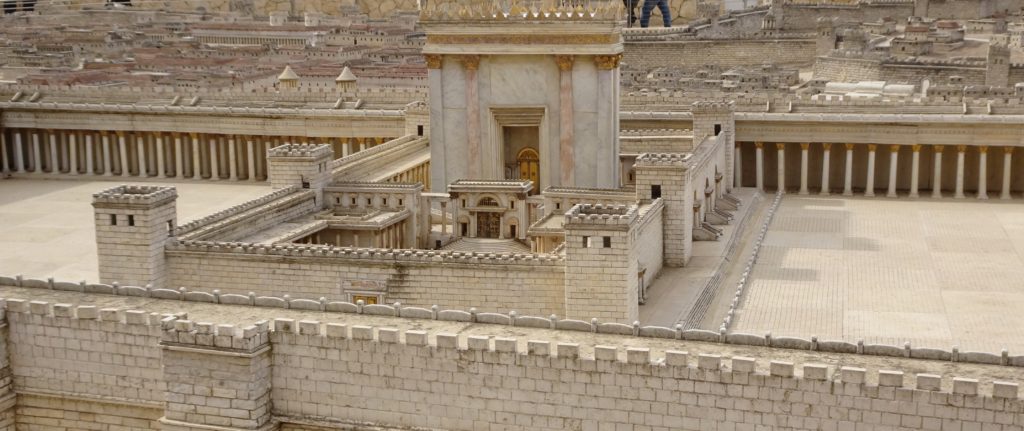
Model t teh Israel Museum https://www.imj.org.il
c) A key statement is John 2.19, when Jesus says “Destroy this shrine and in three days I will raise it up.” This was the key prosecution testimony at Jesus’ trial before the high priest, (Mark 14.58). They were clearly referring to something that happened a week before, not two years before. But what a fantastic confirmation of something from a very different gospel!
Why would John have placed it there? I don’t know. But there were no chapter divisions in ancient books. Perhaps the first three chapters were a sort of introductory booklet summarising who Jesus is, with the following sections:
- Prologue on the Word
- John the Baptist
- The first disciples
- Water into Wine and Cana
- Cleansing the Temple
- Nicodemus and spiritual rebirth
- John the Baptist – he must increase, I must decrease.
2 The Feast at Bethany
Both John and Mark report the feast at Bethany. Mark has it two days before Passover, John six days before Passover. I think John is right, because pilgrims were expected to arrive at last a week before the festival; and that he is right to make Mary, the brother of Lazarus, the one who puts ointment on his feet rather than an unnamed woman. Richard Bauckham in ‘The Testimony of the Beloved Disciple’ points out that the phrase ‘they made a dinner for him’ is quite unspecific, and it could have been a whole village affair. Room for Lazarus/Eleazar and Simon the leper.
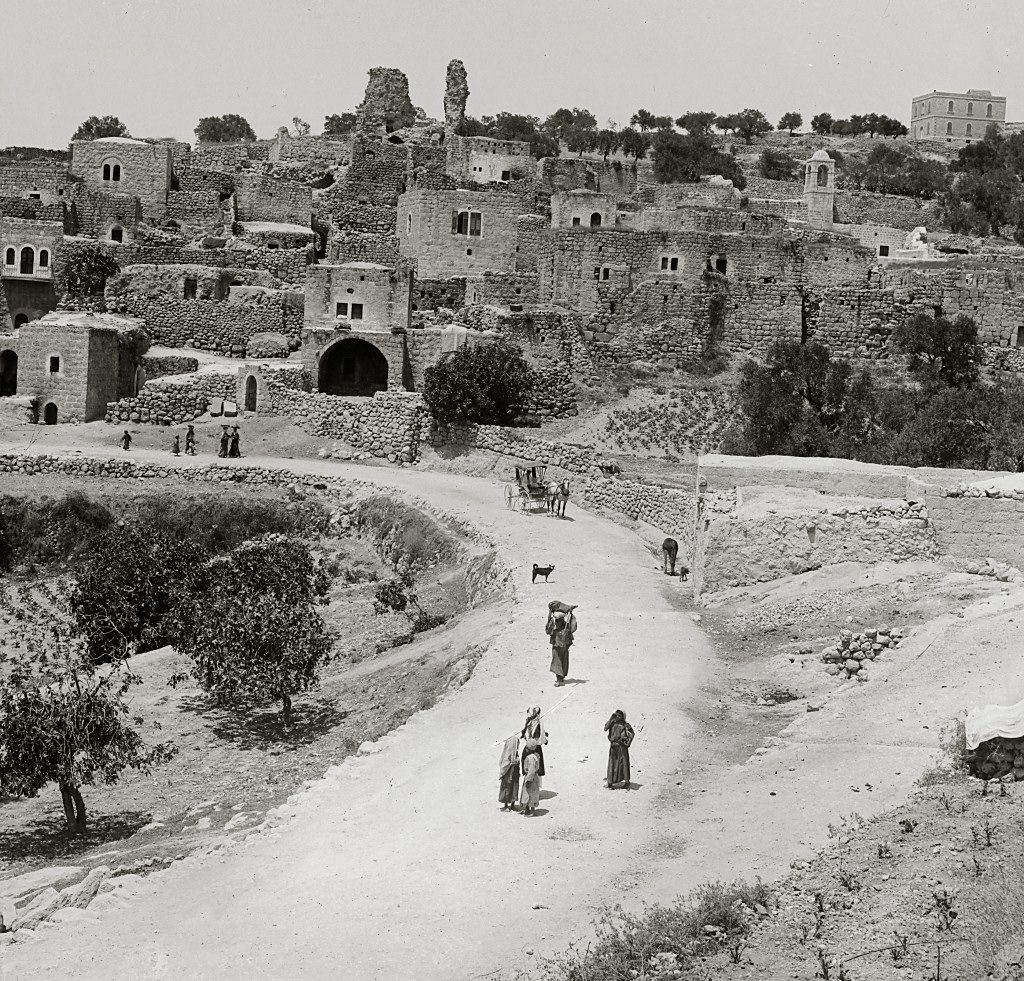
3 The Last Supper
As I said, I think that the gospel of John was written by a Jerusalem disciple who was also the Beloved Disciple (John 13.23). So how did he get into the Last Supper along with the twelve? (Note that John never uses the word apostle). Perhaps it was held in his house. Perhaps Jesus wanted him there as a representative of his Jerusalem followers. If so, it accounts for the detailed description of Jesus’ washing his disciples’ feet ( including Judas’).
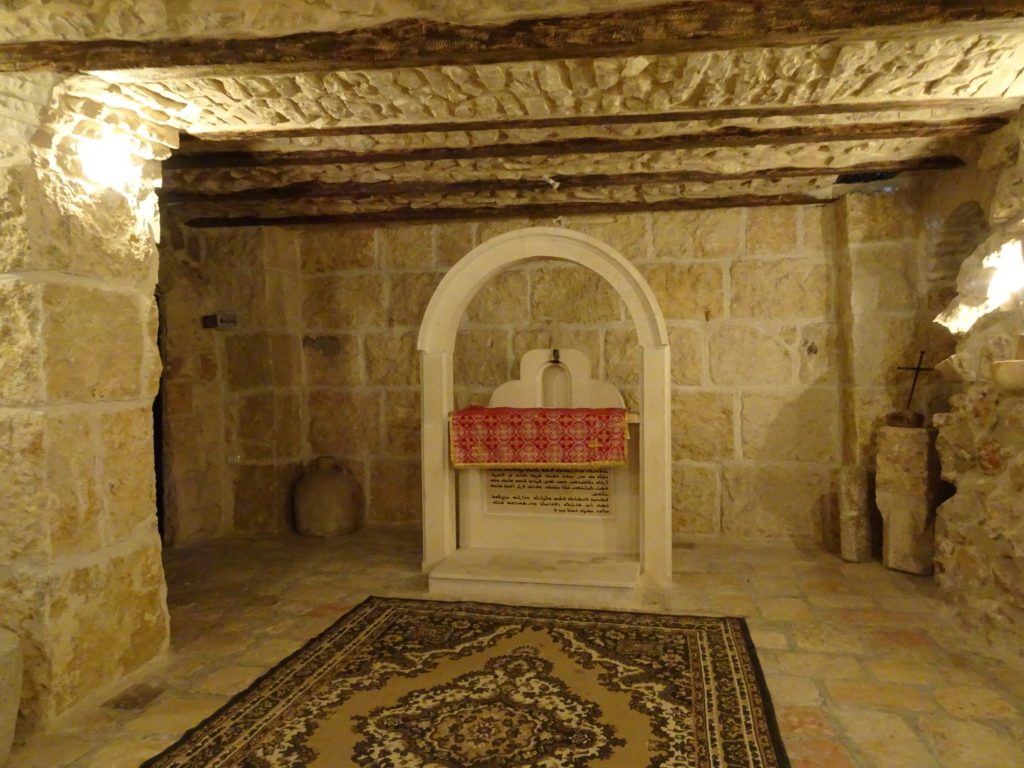
But why no account of Jesus’ words over the bread and wine at the beginning and end of the meal? (cf Paul in 1 Corinthians 11.23-26). Was it perhaps because John’s gospel was meant for general circulation, (John 20.30), and that the central rite should not be mentioned to avoid it being confused with one of the proliferating mystery religions such as Mithraism? Writing around 145 AD the Christian philosopher Justin, wrote of Christian communion ‘which the wicked devils have imitated in the mysteries of Mithras, commanding the same things to be done. For, that bread and a cup of water are placed, with certain incantations, in the mystic rites of one who is being initiated, you either know or can learn.’ (Apologias ch.66)
4 Trial before Annas
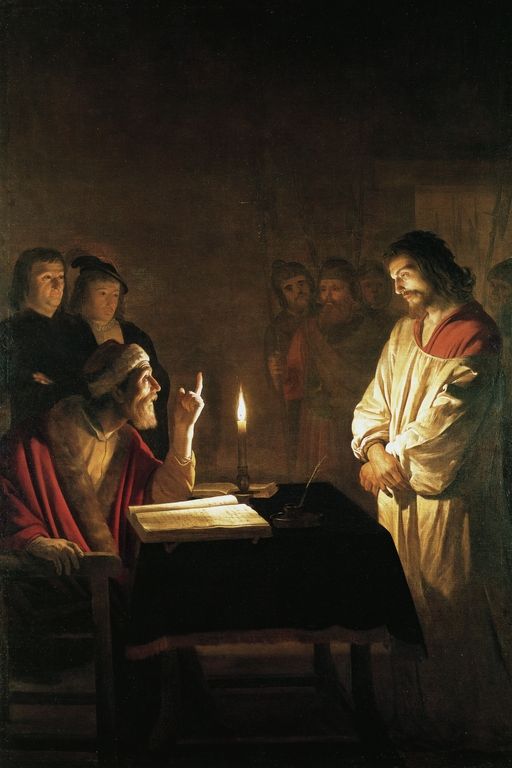
John is the only gospel writer to detail the late night interrogation by Annas. I am sure that it is correct, for three reasons:
a) After Jesus’ arrest, Annas palace in the old Hasmonean palace was the nearest place to the North Gate through which Jesus would have been brought.
b) There were effectively two high priests at that date: Annas who the Romans had appointed from 8 to 15 AD, and his son-in-law Caiaphas who was appointed by then new Prefect Pontius Pilate in 26 AD. See Acts 4.6. So after Annas failed attempt to get something incriminating from Jesus, he sent him over to Caiaphas’ palace which had a useful dungeon (recently discovered). The formal trial would have started at sunrise, at 6.00 or 6.30 am.
c). It makes sense of Simon Peter’s denial of Jesus before the second cockcrow, probably the bugle call announcing the changing of the watch at the Antonia fortress nearby, i.e. at 3 am. (William Barclay’s suggestion).
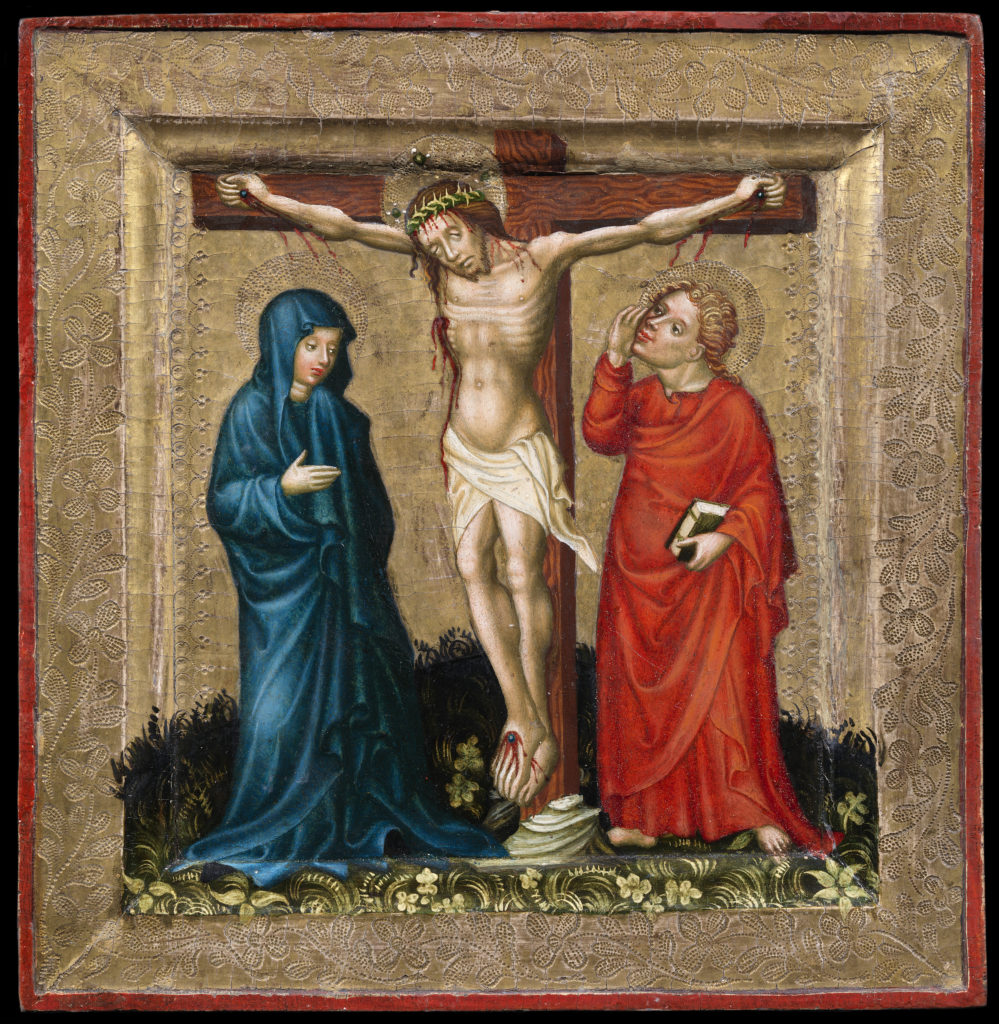
5 At the cross
It is somewhat dismaying that Mark, Luke and John all record different last sayings of Jesus. John’s account has Jesus saying to him and Mary “Son, here is your mother’, and ‘Lady, here is your son’. I think thisis one of the most certain accounts. You can hear the laboured breathing of Jesus as he hung on outstretched arms. And It makes perfect sense in John was a Jerusalem disciple. Jesus was placing his mother in perhaps the only safe house in Jerusalem.
6 The grave at dawn
The meeting of Jesus with Mary Magdalene is so dramatic and plausible it is hard to entertain any doubts. But there is a disconnect with the end of Mark’s gospel. Mark has three women at the tomb, including Mary Magdalene, Luke has three plus others. John starts with Mary Magdalene alone.
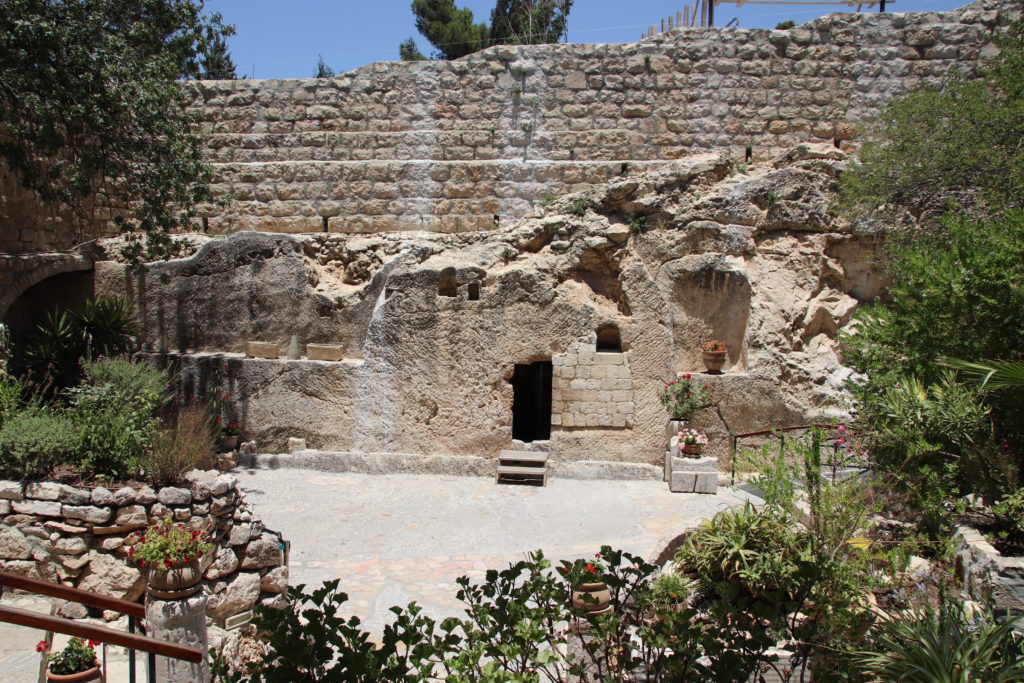
I think the clue is in the question, ‘Where was Peter?’ The strange young man in the tomb had said, “Tell his disciples and Peter …”.as if he was in a different place. We last left Peter in the courtyard of the palace of Annas the (former) high priest at 3 a.m It was far too dangerous for someone possibly wanted by the police to be wandering around Jerusalem at night. Who was there who could have helped? John, the Jerusalem disciple. He must have scooped the distraught Peter up and taken him to his home in the city where he stayed all through that dreadful Friday and the following Sabbath.
Mary Magdalene guessed that Simon was in John’s house, which is why only two disciples – not the eleven – ran to find out what had happened at the tomb. And why Mary Magdalene was alone when Jesus met her.
WHY JOHN?
Why did John write such a different type of book from the other gospels written around the same time? Could it be because he had a different audience in mind?
‘These (things) are written so that you may come to believe that Jesus is the Messiah, the Son of God, and that through believing you may have life in his name.’ (John 20.31)
NEXT MONTH
Next month I will ask how we can make sense of John’s gospel in general, including the discourses and speeches in John 14 to 17. It’s a challenge!
